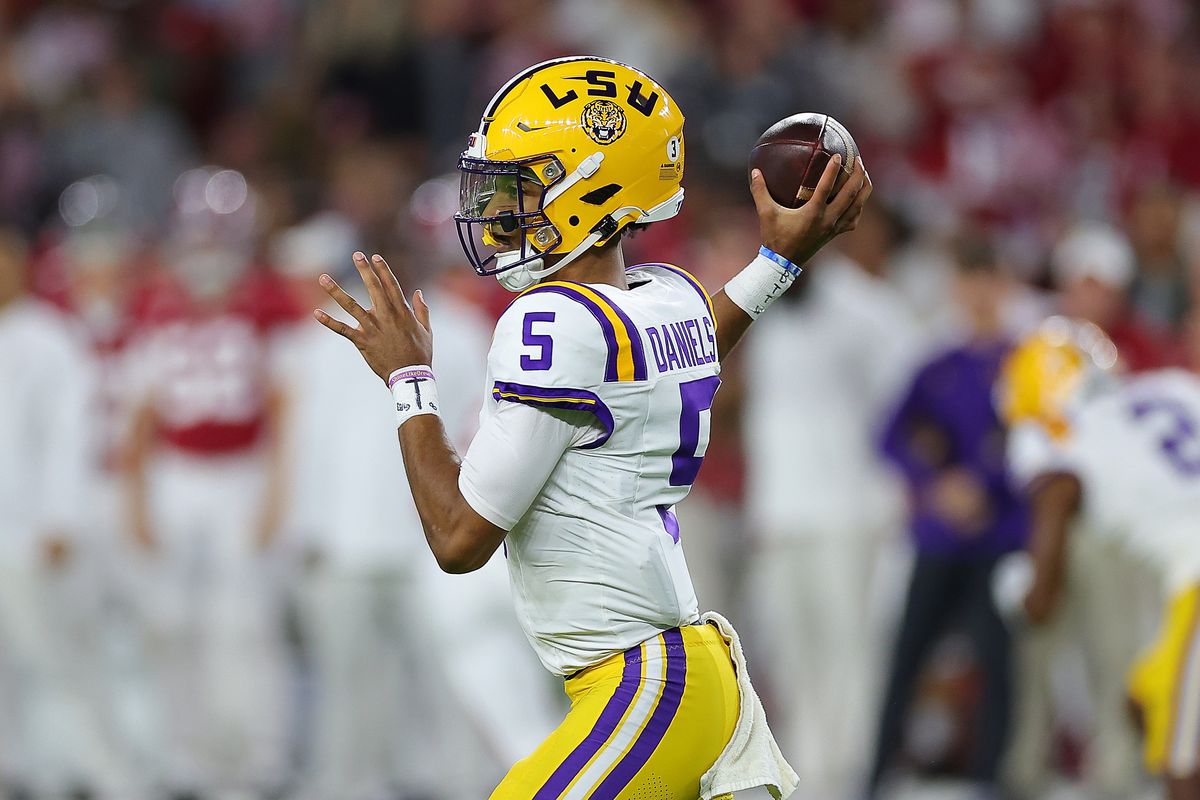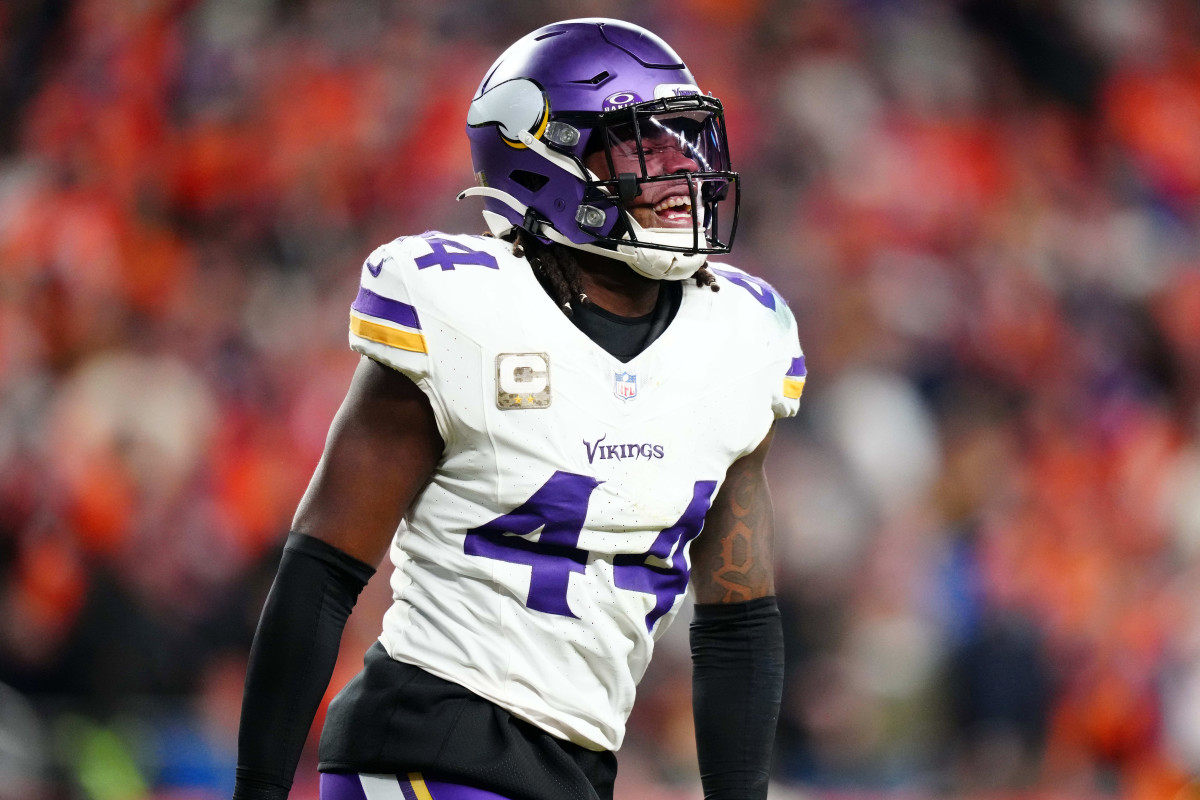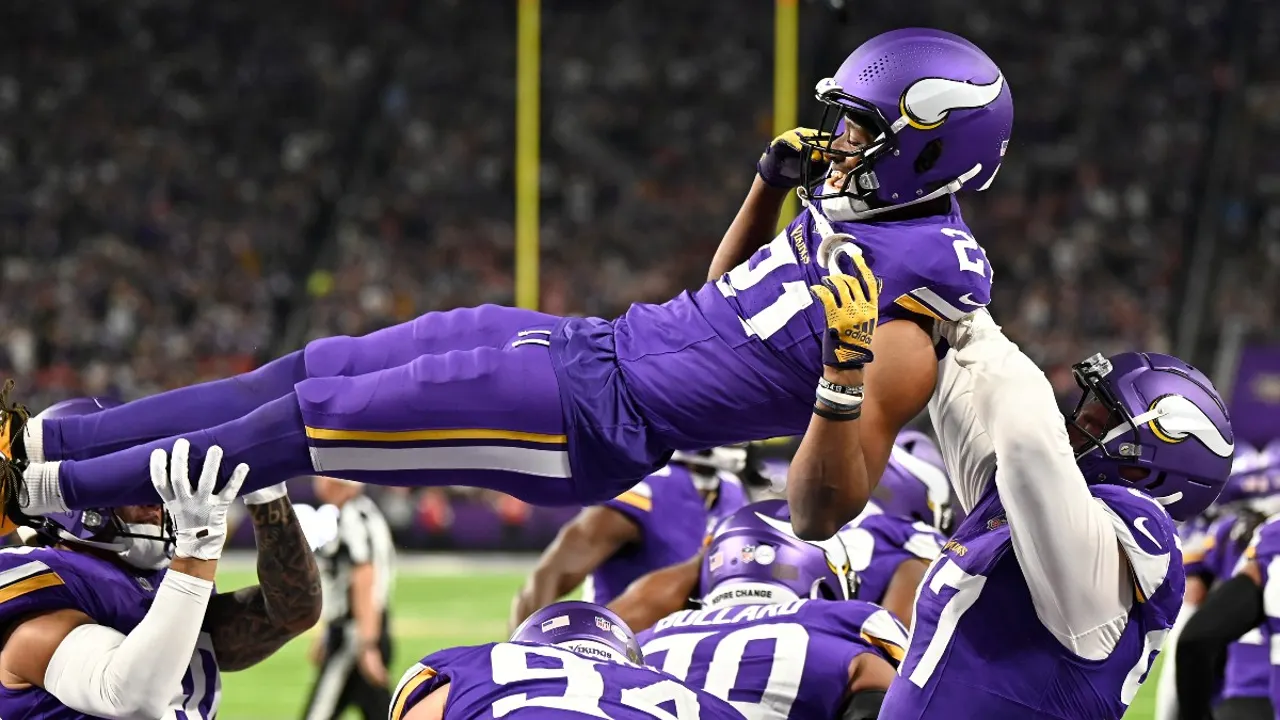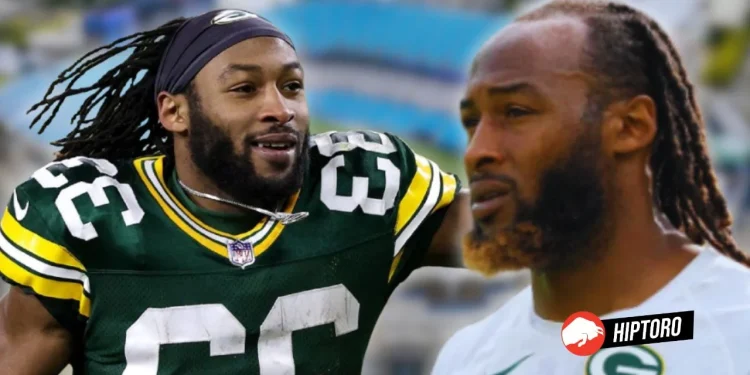In an era where the whisper of obsolescence around veteran running backs has grown increasingly louder, the Minnesota Vikings’ recent roster moves have sparked a significant conversation across the NFL landscape.
The Vikings’ general manager, Kwesi Adofo-Mensah, has thrown a spotlight on the evolving dynamics of the running back position, challenging the prevailing winds of valuation with the team’s latest acquisition.

Minnesota Vikings: A Bold Strategy Amidst Free Agency Frenzy
The Minnesota Vikings have been at the forefront of a curious trend in the past two offseasons, severing ties with their starting running backs in pursuit of a more cost-effective yet impactful strategy. Last year’s departure of Dalvin Cook, followed by the release of Alexander Mattison this year, painted a picture of a team in flux, searching for the right balance between performance and expenditure.
In a move that caught many off guard, the Vikings secured the services of Aaron Jones, the former Packers stalwart, with a one-year deal worth $7 million. This decision is particularly striking, considering the Vikings’ recent history of parting ways with their lead backs due to financial concerns. Kwesi Adofo-Mensah’s insights shed light on a potentially undervalued market for veteran running backs, suggesting that the league’s perspective on aging players in this position might be ripe for reassessment.
Their 1st day of Skol 💜 pic.twitter.com/ENvpq8ENlg
— Minnesota Vikings (@Vikings) March 25, 2024
Aaron Jones: A Cut Above the Rest
Aaron Jones‘ tenure with the Packers was marked by consistent excellence, culminating in a record-setting performance of over 100 rushing yards in five consecutive games, including pivotal playoff matchups against the Cowboys and 49ers. His ability to maintain an average of at least 4.6 yards per carry and 5.2 yards per touch over seven seasons distinguishes him significantly from his predecessors, Cook and Mattison, whose performances had notably declined.
The Minnesota Vikings’ willingness to invest in Jones, despite the broader league trend of devaluing the running back position, signals a recognition of his unique contributions and a belief in the value of experienced players who continue to perform at a high level.

The Minnesota Vikings’ Vision: Rebalancing the Scale
Adofo-Mensah‘s commentary highlights a broader debate within the NFL regarding the valuation of running backs. The Minnesota Vikings’ approach suggests a nuanced understanding of performance metrics and player value, positing that the market may have overcorrected in its devaluation of veteran talent.
By focusing on efficiency and impact, the Vikings aim to recalibrate the balance, leveraging players like Jones to enhance their offensive strategy without succumbing to the financial pressures that often dictate player transactions.
The signing of Aaron Jones is not merely a personnel decision but a statement of intent. It reflects a belief in the enduring value of veteran running backs and a challenge to the conventional wisdom that has guided team strategies in recent years.
As the NFL landscape continues to evolve, the Vikings’ move may signal a shift towards a more balanced appreciation of experience and performance, potentially ushering in a new era for the running back position.

In conclusion, the Minnesota Vikings‘ strategic pivot, underscored by the acquisition of Aaron Jones, serves as a compelling case study in the ongoing discourse on player value and team composition.
As other teams observe and react to this bold move, the coming seasons may well reveal a broader market correction, with veteran running backs once again finding themselves in the spotlight, valued not just for their experience but for their ability to significantly impact the game.

Source: CBS Sports









